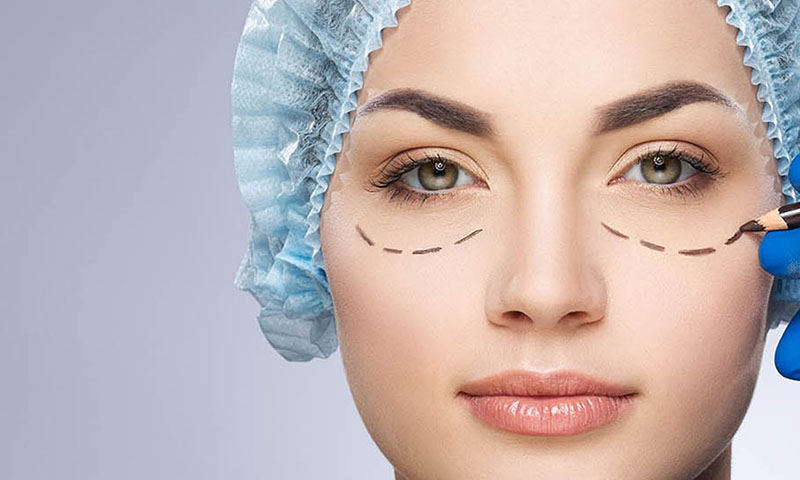Cosmetic surgery for the eyelids is one of the most frequent operations in the face area after 40s. Eyelid complaints usually occur in the upper eyelid with excess skin, eyelids falling down or bagging in the lower eyelids. Upper eyelid surgeries are an aesthetic surgery that is easy for the patient. Excess skin is marked on the eyelid before surgery. Before starting eyelid surgery, an evaluation is made, routine blood tests are completed and the procedure is completed on the same day. The goal is to remove excess fat and bagged fat from the upper and lower eyelids.
Although eyelid aesthetic surgery is generally seen as a simple procedure under the name of local anesthesia, the anatomical structure of the eyelid contains very complex structures. Therefore, the tests to be performed before surgery are very important. Especially in patients with impaired structure of the eyelid, this importance is higher in patients with complaints such as low eyelid. Low age of the eyelid due to aging and the sagging on the eyelid is one of the problems that should be approached very seriously. Eye dryness may occur after aesthetic procedures performed on the lower lid of the eye. In order to prevent this problem, especially in advanced age, it is very important to determine whether or not this risk is present with the tests performed before the operation.
Eyelid surgeries are divided into two as upper and lower eyelid operations. The basic operation of these surgeries is the tightening of the sagging skin in this region. There is also a low eyelid. This is an issue involving the upper eyelid. Upper eyelid depletion can also be caused by congenital diseases. If the lower eyelid area is bombed, the region is tightened. If excessive muscle accumulation is present, many procedures can be performed, such as removal of excess muscle, excess fat, and excess. If eyelid aesthetics are done by experts, successful results can be obtained.
Eyelid surgeries last for 1-1.5 hours and the eyelids are exhilarating to the old young appearance. It is a day surgery and does not need to stay in hospital. The patient is discharged after 2-3 hours of rest after surgery. Large dressings are not required. The thin tape is placed on the top and bottom of the eyelid. Self-absorbing seams are used. Adhesive tapes can be removed after 3-4 days and there are opportunities to participate actively in daily life. After the surgery, the redness and bruises that occur in the eyelids pass within 10-15 days. Local anesthesia is a procedure that increases the comfort of the doctor and the patient. No special intervention is required after the operation. It is recommended that the patient protects the surgical area from the sun as much as possible during the first 3 months.





Let's Call You